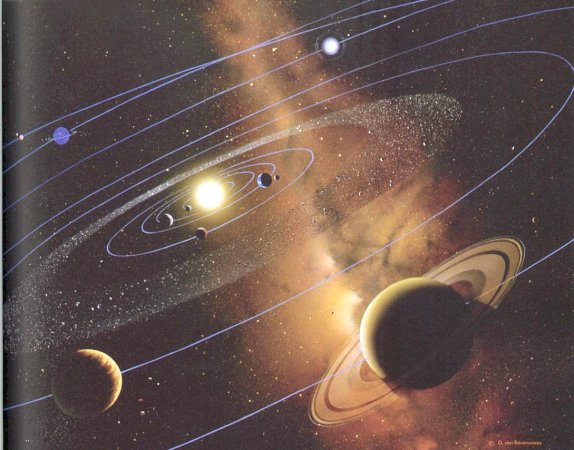The Solar System consists of the Sun and those celestial objects bound to it by gravity. These objects are the eight planets, their 166 known moons, five dwarf planets, and billions of small bodies. The small bodies include asteroids, icy Kuiper belt objects, comets, meteoroids, and interplanetary dust.
The charted regions of the Solar System are the Sun, four terrestrial inner planets, the asteroid belt, four gas giant outer planets, the Kuiper belt, the scattered disc, and the hypothetical Oort cloud.
A flow of plasma from the Sun (the solar wind) permeates the Solar System. This creates a bubble in the interstellar medium known as the heliosphere, which extends out to the middle of the scattered disc.
In order of their distances from the Sun, the eight planets are:
1. Mercury
2. Venus
3. Earth
4. Mars
5. Jupiter
6. Saturn
7. Uranus
8. Neptune
As of mid-2008, five smaller objects are classified as dwarf planets. Ceres is in the asteroid belt, and four orbit the Sun beyond Neptune: Pluto (formerly classified as the ninth planet), Haumea, Makemake, and Eris.
Six of the planets and three of the dwarf planets are orbited by natural satellites, usually termed "moons" after Earth's Moon. Each of the outer planets is encircled by planetary rings of dust and other particles.
The Solar System
Labels: Nature



